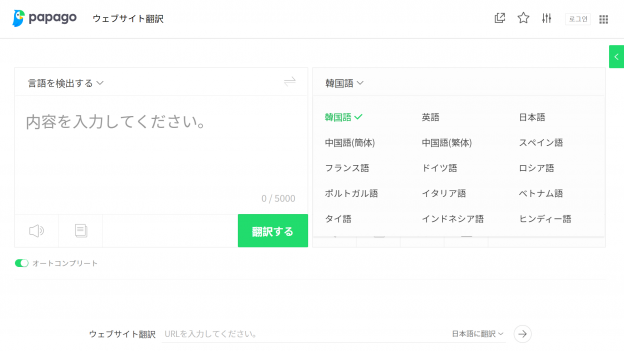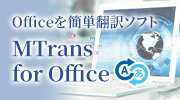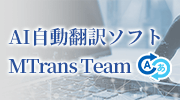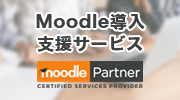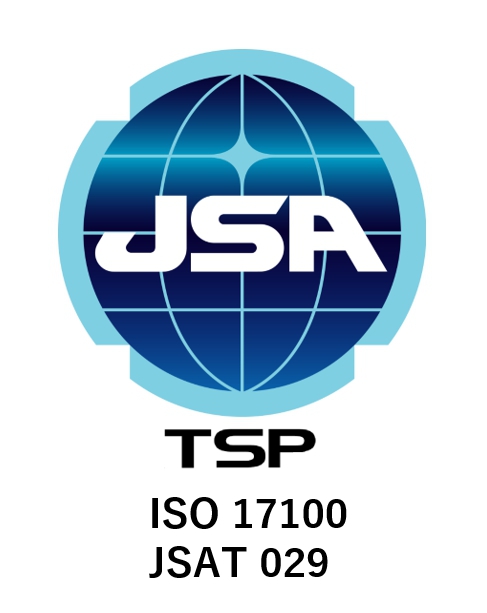
In recent years, with the increase in foreign tourists visiting Japan, the importance of inbound measures has been growing. One of the major challenges many companies face in inbound strategies is the language barrier. This article provides a detailed explanation of "multilingual support," the key to success in inbound business, including specific methods, success stories, and efficient implementation techniques.
- Table of Contents
-
- 1. What is inbound business?
- 1-1. What is Inbound Business
- 1-2. Background Necessitating Inbound Business
- 2. Industries and Sectors That Require Inbound Business
- 2-1. Hotel and Ryokan Industry
- 2-2. Tourism Industry
- 2-3. Food and Beverage Industry
- 2-4. Experience Content Business for Foreigners
- 3. The Key to Success in Inbound Business is "Multilingual Support"
- 3-1. Specific Methods for Multilingual Support
- 3-2. Why Multilingual Support Holds the Key to Success
- 3-3. Improving Customer Satisfaction
- 3-4. Expansion of Reach
- 3-5. Enhancing Competitiveness
- 4. Challenges of Multilingual Support in Inbound Business
- 4-1. Shortage of Personnel Who Can Speak Foreign Languages
- 4-2. It costs money
- 4-3. Unable to handle all inquiries from inbound customers
- 4-4. Inefficiency in Multilingual and Translation Operations
- 5. Successful Cases of Inbound Business with Multilingual Support
- 5-1. Successful Cases in the Hotel Industry
- 5-2. Successful Cases of Restaurants
- 5-3. Successful Case Studies in the Car Rental Industry
- 6. Efficient Methods for Making Content Multilingual
- 7. Summary
1. What is Inbound Business?
1-1. What is Inbound Business
Inbound business refers to a business model targeting foreign tourists visiting Japan from overseas. It involves creating new revenue sources by offering services and products originally intended for the domestic market tailored to the needs of foreign customers.
1-2. Background for the Need of Inbound Business
Japan's inbound market recorded approximately 31.88 million foreign visitors in 2019 before the COVID-19 pandemic, with consumption reaching 4.8 trillion yen. As the domestic market shrinks due to population decline, the inbound market holds an important position in corporate growth strategies. Additionally, the government has set a target of 60 million inbound tourists and 15 trillion yen in consumption by 2030, and both the public and private sectors are working together to promote inbound tourism.
2. Industries and Sectors That Require Inbound Business
2-1. Hotel and Ryokan Industry
Accommodation facilities are one of the industries with the most contact with foreign tourists. Multilingual support is required in various situations, from check-in and check-out procedures to in-room service guidance.
2-2. Tourism Industry
Tourism is an important industry that influences the quality of travel experiences, including sightseeing guides, tour guides, and transportation. To properly convey the appeal of tourist spots, understanding not only the language but also the cultural background is necessary.
2-3. Food and Beverage Industry
Japanese food culture is one of the major attractions for foreign tourists. Multilingual menus are essential, as well as explanations of ingredients and allergy information.
2-4. Experience Content Business for Foreigners
Traditional craft experiences, tea ceremony experiences, kimono rentals, and other unique Japanese cultural experiences are rapidly growing businesses. To maximize the value of these experiences, appropriate language support is essential.
3. The Key to Success in Inbound Business is "Multilingual Support"
3-1. Specific Methods for Multilingual Support
・Increase Staff Who Speak Foreign Languages
The most direct approach is to hire and assign staff who can speak languages such as English, Chinese, and Korean. This is especially effective in front desk and customer service roles.
・Multilingualization of Signboards and Menus
Displaying signboards, menus, and notices within the facility in multiple languages greatly improves convenience for foreign customers.
・Multilingualization of Brochures and Guidebooks
Providing detailed information about services and products in the native language leads to deeper understanding and increased satisfaction.
・Multilingual Support for SNS Accounts and Company Websites
From preliminary information gathering to reservations, multilingual support online directly leads to customer acquisition.
・Implementation of Multilingual Chatbots on Websites
With chatbots available 24/7, customer support that accounts for time differences can be realized.
3-2. Why Multilingual Support Holds the Key to Success
・Hospitality and Customer Satisfaction Improvement
By receiving services in their native language, foreign tourists can feel more secure and have a more comfortable experience. As a result, an improvement in customer satisfaction and an increase in repeat rates can be expected.
・Prevent Troubles Before They Occur
You can prevent troubles and complaints caused by language misunderstandings. Accurate communication is especially important for safety-related information and terms of use.
・Leads to acquiring new customers
Good reviews on word of mouth and social media lead to acquiring new foreign customers. Especially, ripple effects are expected among tourists from the same country or region.
・Gain an Advantage in Market Competition
Multilingual support becomes a differentiating factor from competitors with insufficient language options, increasing the likelihood of being chosen by foreign customers.
3-3. Improving Customer Satisfaction
Providing information in the native language enhances comfort and reassurance, significantly improving overall customer satisfaction.
3-4. Expansion of Reach
By supporting multiple languages, you can approach tourists from more countries and regions, enabling the development of new customer segments.
3-5. Enhancing Competitiveness
Comprehensive multilingual support differentiates you from competitors and enhances your competitiveness as a preferred facility or service.
4. Challenges of Multilingual Support in Inbound Business
4-1. Shortage of Personnel Who Can Speak Foreign Languages
One of the biggest challenges many companies face is securing personnel capable of handling foreign languages. This is especially difficult in rural areas, where finding staff who can speak foreign languages is a challenge.
Countermeasures: Increase the number of information boards, introduce translation tools, etc.
By installing multilingual information boards and introducing smartphone translation apps and voice translators, it is possible to compensate for the shortage of personnel.
4-2. Costs Incurred
Translating all content into multiple languages at once incurs significant costs.
Countermeasures: Introduce from high-demand areas
By gradually implementing multilingual support starting with the most critical sections (such as safety information and basic service guidance), you can maximize the return on investment.
4-3. Unable to handle inquiries from inbound customers
If it takes time to respond to each inquiry from foreign tourists, the overall efficiency of operations will decline.
Countermeasures: Multilingual support for AI chatbots and inquiry systems
By utilizing AI technology in automated response systems, it is possible to establish a system that can handle basic inquiries 24 hours a day.
4-4. Inefficiency in Multilingual and Translation Operations
Traditional translation methods take too much time and effort, making quick response difficult.
Countermeasures: Use efficient tools
By implementing tools that utilize the latest translation technologies, it is possible to achieve both improved efficiency and quality in translation tasks.
5. Case Studies of Successful Inbound Business with Multilingual Support
5-1. Success Stories in the Hotel Industry
A nationwide hotel chain has installed tablets in guest rooms to provide multilingual in-house service information. By introducing an English-language self-service Wi-Fi rental system and developing multilingual FAQs for common questions, they have simultaneously improved front desk efficiency and customer satisfaction. Additionally, another hotel chain has implemented the automatic translation software "MTrans for Office," which can be used with office applications such as Word, Excel, and Outlook, to streamline foreign language communication with customers.
5-2. Successful Cases of Restaurants
In tourist areas of the Kyushu region, as part of a project to enhance local restaurants, we created English menus and introduced local specialty dishes tailored for inbound visitors. Rather than simple translation, we developed menus considering foreign tastes and food cultures, which significantly increased the number of foreign customers. This has also contributed to revitalizing the entire region.
5-3. Successful Cases in the Car Rental Business
A major car rental company installed transparent displays with translation capabilities at their branches. This system enables real-time multilingual communication, reducing the explanation time for foreign customers to half of what it used to be. At the same time, improved understanding has significantly decreased accidents and troubles.
6. Efficient Methods for Multilingual Content Support
Introducing MTrans for Office as an efficient tool to solve multilingual challenges. MTrans for Office is directly integrated into the Word, Excel, PowerPoint, and Outlook you regularly use, so there is no need to learn how to use new software. You can utilize translation functions without changing your existing workflow.
For example, to create an English email in Outlook, write the body in Japanese first, then click the "Execute Translation" button. Multiple English translations from various translation services will appear in the translation panel on the right. By simply clicking the "Replace" button, you can replace the Japanese text in the body with English.
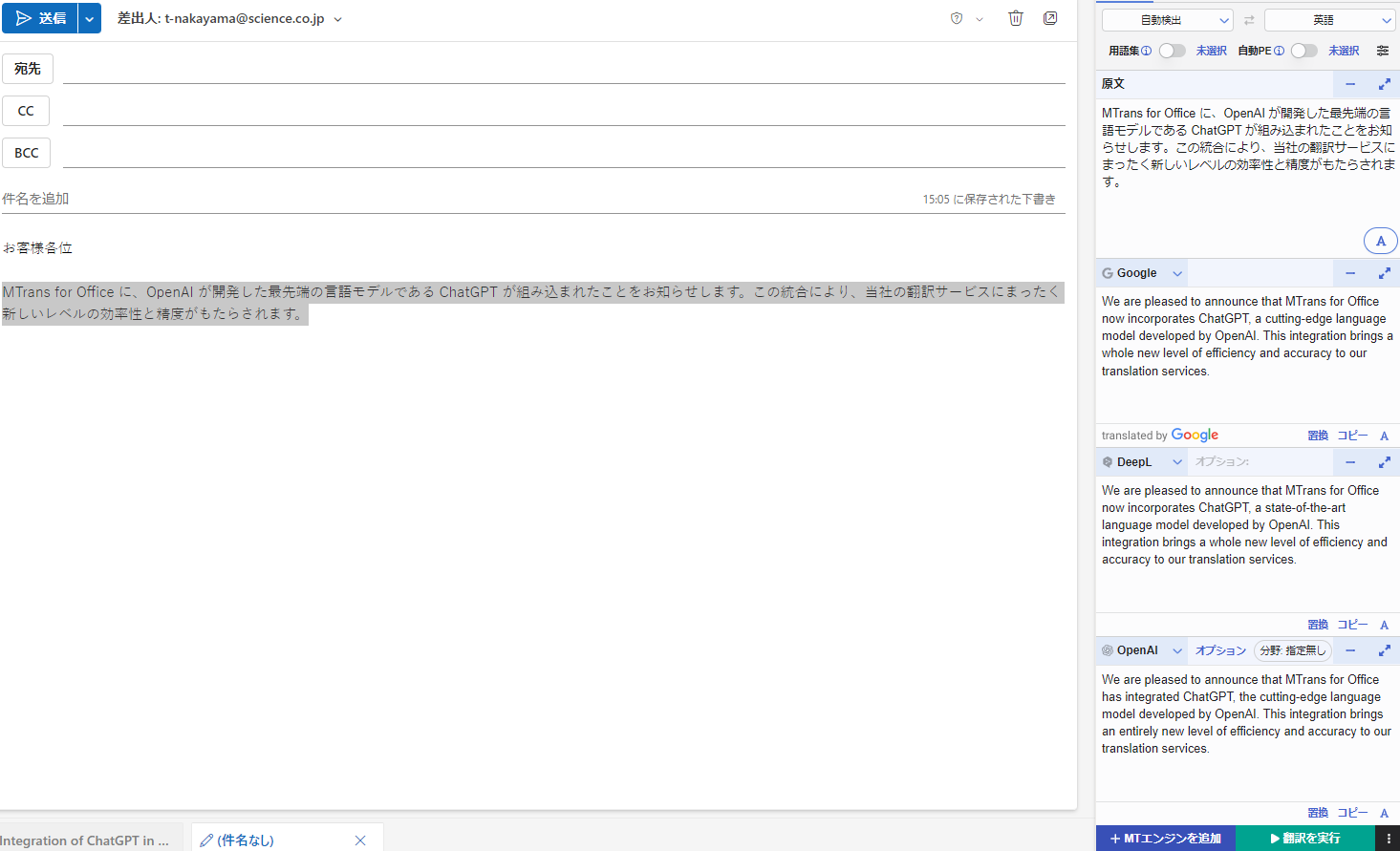
Additionally, MTrans for Office is equipped with OpenAI's generative AI, which is also used in ChatGPT. You can write the summary of an email in Japanese, select the text, and then click the execute button to automatically create an English email based on the Japanese summary. By clicking the "Replace" button, the result is reflected in the email body, and simply changing details like the customer's name completes the English email.
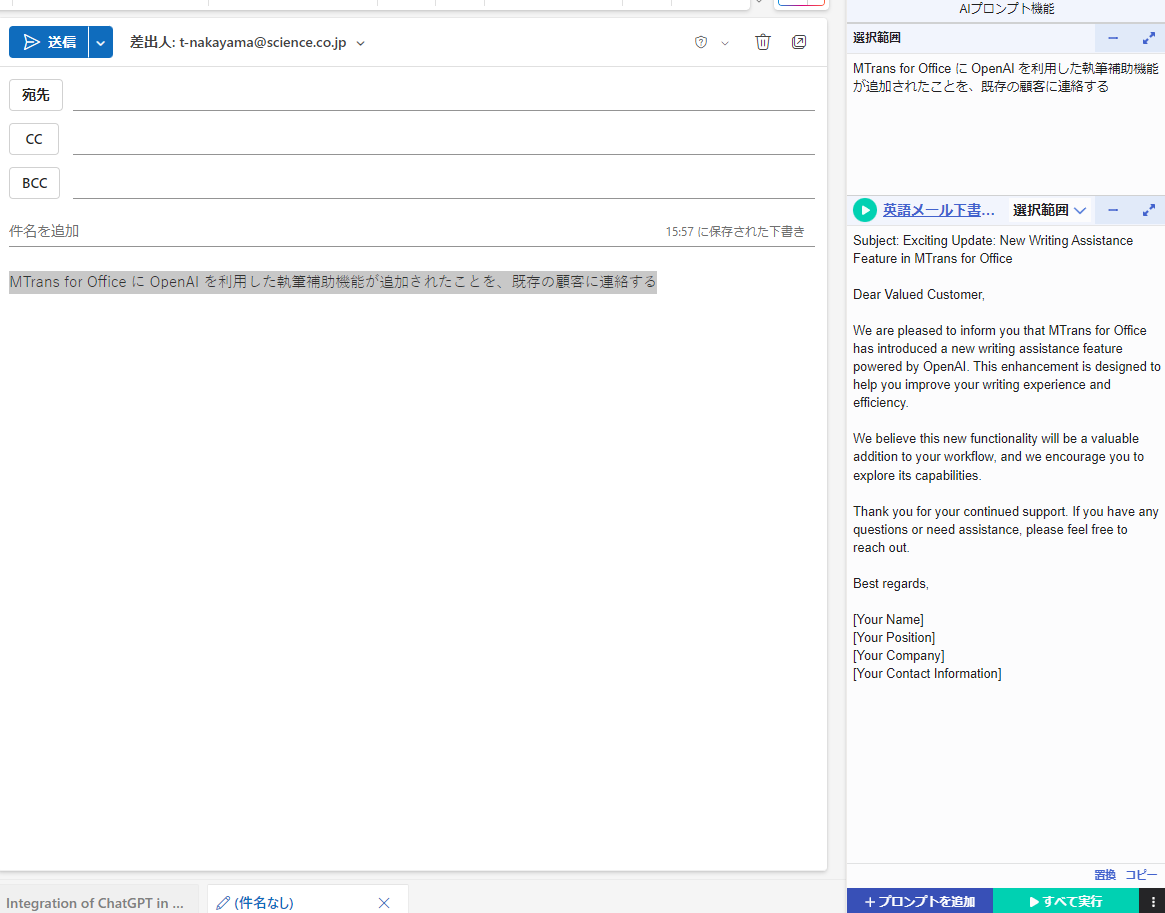
MTrans for Office offers intuitive operability, allowing you to utilize translation and AI functions within Office applications without special IT knowledge, which can reduce translation workload and improve operational efficiency.
7. Summary
Multilingual support in inbound measures is expected to become increasingly important in the future. By continuously improving and listening to the voices of foreign tourists, truly valuable inbound strategies can be realized. However, it is also true that multilingualization requires time and cost.
What we want to highlight here is the add-in software "MTrans for Office," which allows you to easily translate documents and emails within Office apps such as Word, Excel, PowerPoint, and Outlook. By utilizing MTrans for Office, you can perform translation tasks directly from the Office apps you use daily, enabling speedy and efficient multilingual support without requiring any special technical knowledge. This allows those in the tourism industry to devote more time to improving the quality of the services they should be focusing on.
MTrans for Office offers a 14-day free trial. Please give it a try.
Features of MTrans for Office
- ① Unlimited number of file translations and glossary integration for a fixed fee
- ② One-click translation from Office products!
- ③ Security is also assured with API connection
・For customers who want further enhancement, we also offer SSO, IP restrictions, and more - ④ Support in Japanese by Japanese companies
・Response to security check sheets is also available
・Payment by bank transfer is available
MTrans for Office is an easy-to-use translation software for Office.

















